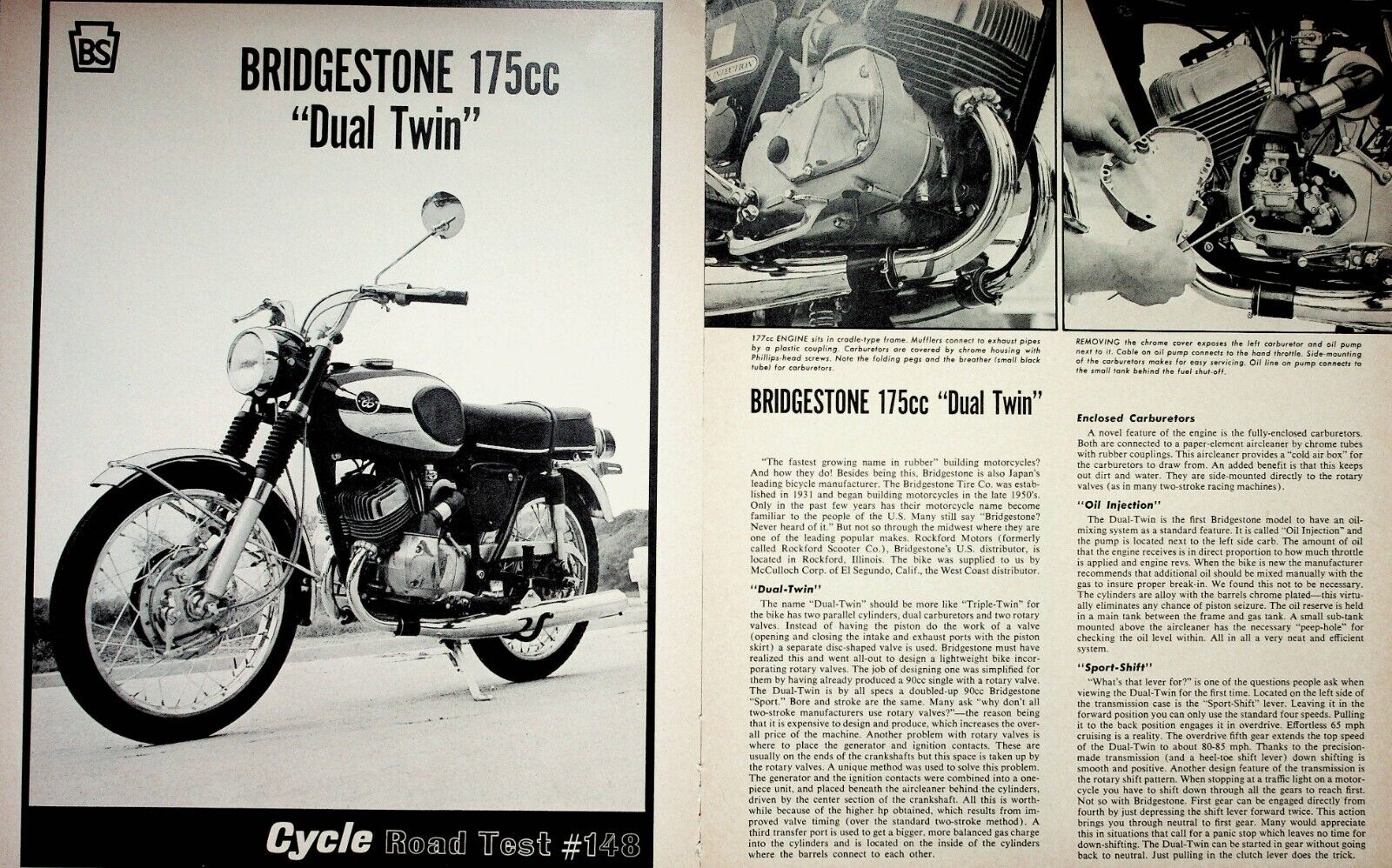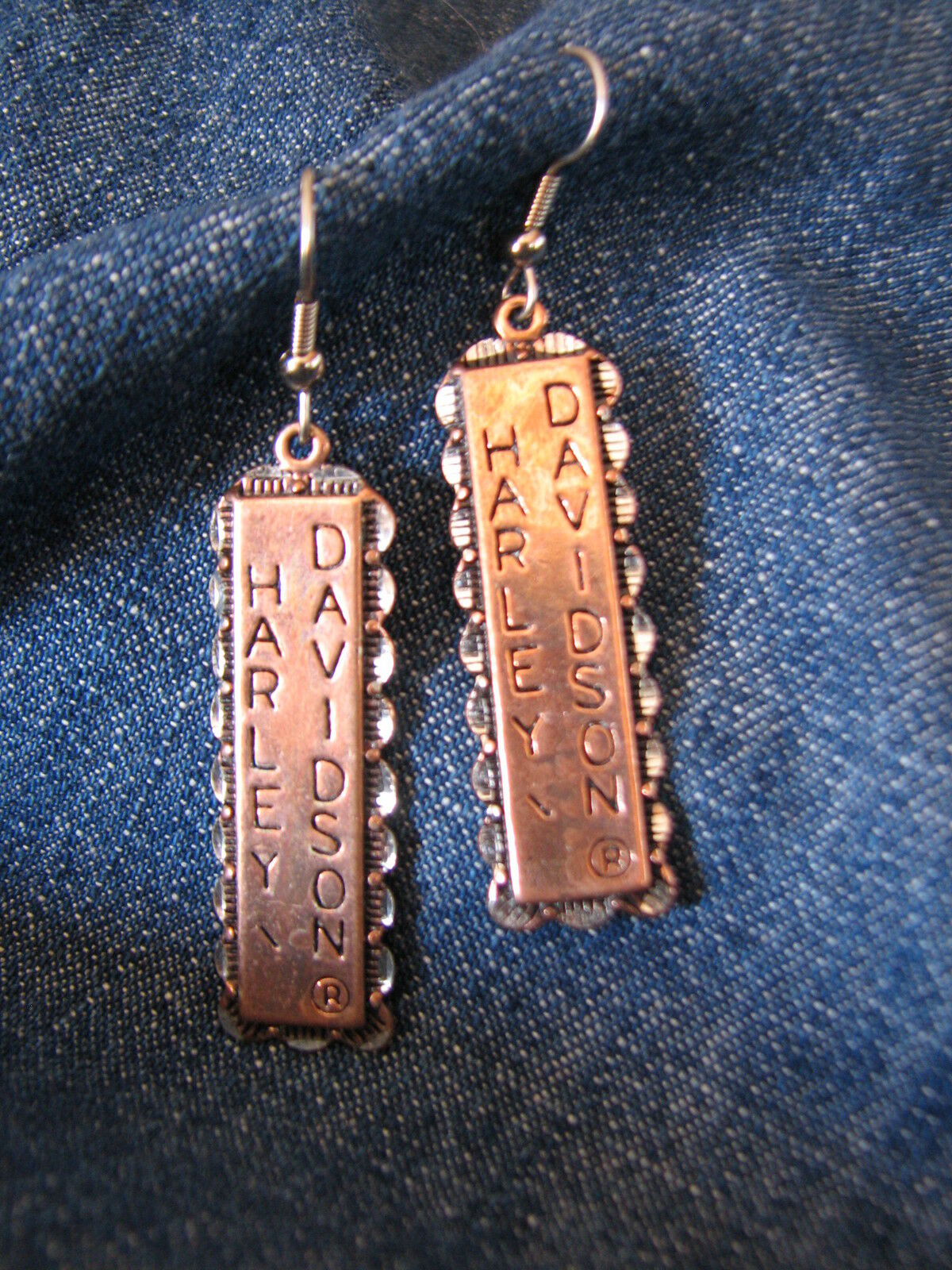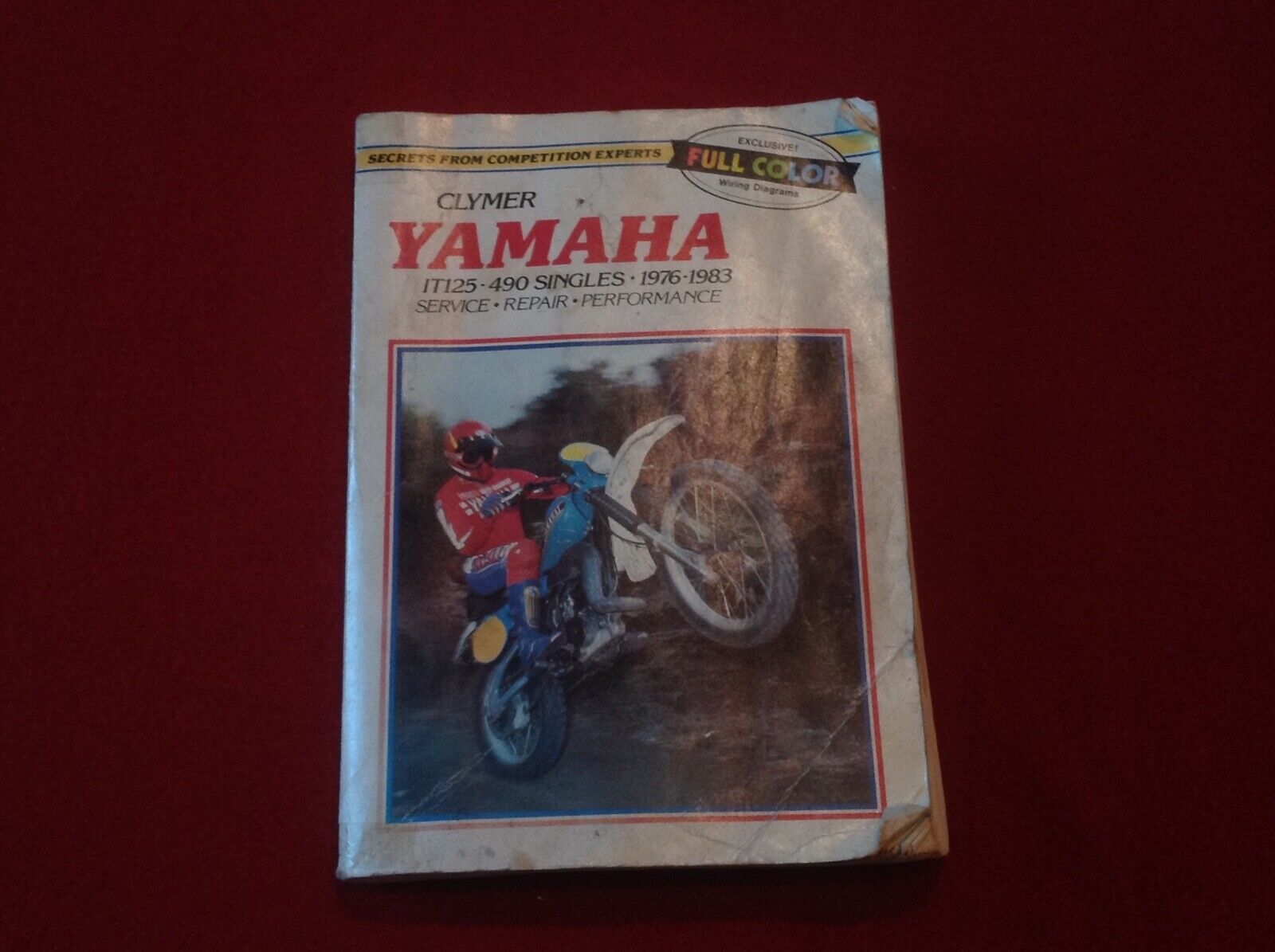-40%
1966 Bridgestone 175 Dual Twin Motorcycle Road Test - 3-Page Vintage Article
$ 7.6
- Description
- Size Guide
Description
1966 Bridgestone 175 Dual Twin Motorcycle Road Test - 3-Page Vintage ArticleOriginal, Vintage Magazine article.
Page Size: Approx. 8" x 11" (21 cm x 28 cm) each page
Condition: Good
® BRIDGESTONE 175cc
“Dual Twin"
177cc ENGINE sits in cradle-type frame. Mufflers connect to exhaust pipes
by a plastic coupling. Carburetors are covered by chrome housing with
Phillips-head screws. Note the folding pegs and the breather (small black
tube) for carburetors.
REMOVING the chrome cover exposes the left carburetor and oil pump
next to it. Cable on oil pump connects to the hand throttle. Side-mounting
of the carburetors makes for easy servicing. Oil line on pump connects to
the small tank behind the fuel shut-off.
BRIDGESTONE 175cc “Dual Twin”
Cycle [S©si(fl
“The fastest growing name in rubber” building motorcycles?
And how they do! Besides being this, Bridgestone is also Japan’s
leading bicycle manufacturer. The Bridgestone Tire Co. was estab-
lished in 1931 and began building motorcycles in the late 1950’s.
Only in the past few years has their motorcycle name become
familiar to the people of the U.S. Many still say “Bridgestone?
Never heard of it.” But not so through the midwest where they are
one of the leading popular makes. Rockford Motors (formerly
called Rockford Scooter Co.), Bridgestone’s U.S. distributor, is
located in Rockford, Illinois. The bike was supplied to us by
McCulloch Corp, of El Segundo, Calif., the West Coast distributor.
“Dual-Twin”
The name “Dual-Twin” should be more like “Triple-Twin” for
the bike has two parallel cylinders, dual carburetors and two rotary
valves. Instead of having the piston do the work of a valve
(opening and closing the intake and exhaust ports with the piston
skirt) a separate disc-shaped valve is used. Bridgestone must have
realized this and went all-out to design a lightweight bike incor-
porating rotary valves. The job of designing one was simplified for
them by having already produced a 90cc single with a rotary valve.
The Dual-Twin is by all specs a doubled-up 90cc Bridgestone
“Sport.” Bore and stroke are the same. Many ask “why don’t all
two-stroke manufacturers use rotary valves?”—the reason being
that it is expensive to design and produce, which increases the over-
all price of the machine. Another problem with rotary valves is
where to place the generator and ignition contacts. These are
usually on the ends of the crankshafts but this space is taken up by
the rotary valves. A unique method was used to solve this problem.
The generator and the ignition contacts were combined into a one-
piece unit, and placed beneath the aircleaner behind the cylinders,
driven by the center section of the crankshaft. All this is worth-
while because of the higher hp obtained, which results from im-
proved valve timing (over the standard two-stroke method). A
third transfer port is used to get a bigger, more balanced gas charge
into the cylinders and is located on the inside of the cylinders
where the barrels connect to each other.
Enclosed Carburetors
A novel feature of the engine is the fully-enclosed carburetors.
Both are connected to a paper-element aircleaner by chrome tubes
with rubber couplings. This aircleaner provides a “cold air box” for
the carburetors to draw from. An added benefit is that this keeps
out dirt and water. They are side-mounted directly to the rotary
valves (as in many two-stroke racing machines).
“Oil Injection”
The Dual-Twin is the first Bridgestone model to have an oil-
mixing system as a standard feature. It is called “Oil Injection” and
the pump is located next to the left side carb. The amount of oil
that the engine receives is in direct proportion to how much throttle
is applied and engine revs. When the bike is new the manufacturer
recommends that additional oil should be mixed manually with the
gas to insure proper break-in. We found this not to be necessary.
The cylinders are alloy with the barrels chrome plated—this virtu-
ally eliminates any chance of piston seizure. The oil reserve is held
in a main tank between the frame and gas tank. A small sub-tank
mounted above the aircleaner has the necessary “peep-hole” for
checking the oil level within. All in all a very neat and efficient
system.
“Sport-Shift”
“What’s that lever for?” is one of the questions people ask when
viewing the Dual-Twin for the first time. Located on the left side of
the transmission case is the “Sport-Shift” lever. Leaving it in the
forward position you can only use the standard four speeds. Pulling
it to the back position engages it in overdrive. Effortless 65 mph
cruising is a reality. The overdrive fifth gear extends the top speed
of the Dual-Twin to about 80-85 mph. Thanks to the precision-
made transmission (and a heel-toe shift lever) down shifting is
smooth and positive. Another design feature of the transmission is
the rotary shift pattern. When stopping at a traffic light on a motor-
cycle you have to shift down through all the gears to reach first.
Not so with Bridgestone. First gear can be engaged directly'from
fourth by just depressing the shift lever forward twice. This action
brings you through neutral to first gear. Many would appreciate
this in situations that call for a panic stop which leaves no time for
down-shifting. The Dual-Twin can be started in gear without going
back to neutral. Just pulling in the clutch lever does the trick...
16515









